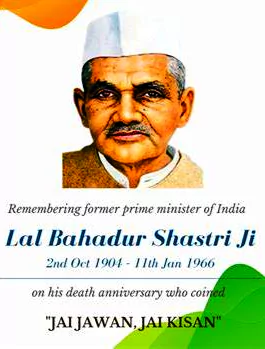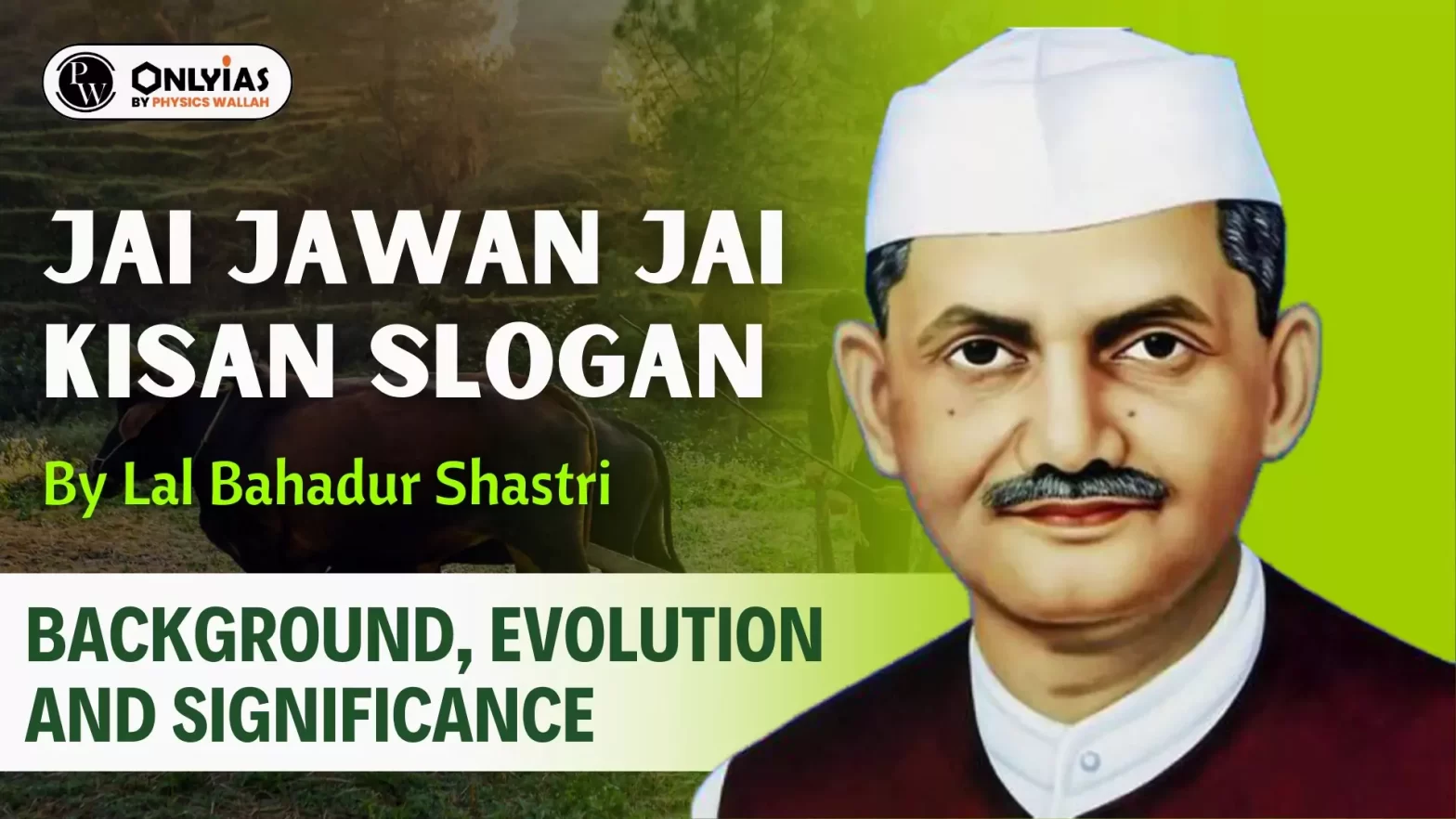Context:
This editorial is based on the news “This Quote Means: ‘Jai Jawan, Jai Kisan’, said by former Prime Minister Lal Bahadur Shastri” which was published in the Indian Express. The ongoing global farmer protests evoke memories of former Indian Prime Minister Lal Bahadur Shastri’s iconic 1965 slogan, “Jai Jawan Jai Kisan,” meaning “hail the soldier, hail the farmer.”
Jai Jawan Jai Kisan Slogan: Background

- Shastri ji emerged as a suitable successor: After Jawaharlal Nehru‘s death in 1964, Lal Bahadur Shastri emerged as a suitable successor due to his exceptional integrity and good administration skills.
- Challenges during his term: Shastri ji faced challenges such as the Naga independence movement, China’s nuclear test, Anti-Hindi agitation in Tamil Nadu and Pakistan’s Operation Gibraltar, leading to the Indo-Pak conflict in 1965.
- Leadership During War: Shastri exhibited decisive leadership during the war, uniting Indians across regions and faiths.
- He was decisive and swift to take the advice of his commanders and order the strike across the Punjab border.
- The war ended in a ceasefire on September 23, 1965, with both sides making limited territorial gains.
Significance of Jai Jawan Jai Kisan Slogan
- Coined the Slogan: during this war at a public gathering in Uruva village in Allahabad district in 1965 to show solidarity with soldiers and farmers.
- “Jai Jawan” was for India’s soldiers protecting the country’s vast borders, while “Jai Kisan” was for the humble farmer going through a crisis of her own.
- It was given at a time when India was facing both internal turmoil and external threats.
-
- There was a shortfall in food production during the 1960s.
- Shastri ji was deeply concerned about the situation and he renewed the focus on India’s agriculture sector.
- This marked a shift from the Nehruvian focus on industry.
-
- Increased Budget allocations to Agriculture: introduced agricultural reforms, and laid the foundation for the Green Revolution.
- Empowered Agricultural Scientists: He empowered the likes of C Subramaniam, whom he appointed agriculture minister, and agriculture scientist M S Swaminathan, who would go on to head the Indian Council of Agricultural Research (ICAR).
- CACP and FCI: Institutions like the Commission for Agricultural Costs and Prices (CACP) and the Food Corporation of India (FCI) were established during his tenure.
- White revolution: He also promoted India’s White Revolution, with the help of Verghese Kurien, by encouraging Kurien to replicate the AMUL cooperative model elsewhere in the country.
-
Evolution of the Jai Jawan Jai Kisan Slogan:
-
- Jai Vigyan: After the 1998 Pokhran nuclear tests which catapulted India to nuclear-power status, Prime Minister Atal Bihari Vajpayee added “Jai Vigyan”, or “hail science” to the slogan, underlining the importance of scientific development for India’s national well-being.
- Jai Anusandhan: Prime Minister Narendra Modi went one step further in 2019, adding “Jai Anusandhan”, or “hail research” to Vajpayee’s quote.
Conclusion
Lal Bahadur Shastri’s short but impactful tenure emphasised the integral roles of soldiers and farmers in ensuring India’s well-being and security, a sentiment that resonates even today.
Also Read: Why Farmers Are Protesting Again
| Prelims PYQ (2018):
Consider the following:
1. Areca nut
2. Barley
3. Coffee
4. Finger millet
5. Groundnut
6. Sesamum
7. Turmeric
The Cabinet Committee on Economic Affairs has announced the Minimum Support Price for which of the above?
(a) 1, 2, 3 and 7 only
(b) 2, 4, 5 and 6 only
(c) 1, 3, 4, 5 and 6 only
(d) 1, 2, 3, 4, 5, 6 and 7
Ans: (b) |
![]() 6 Mar 2024
6 Mar 2024


